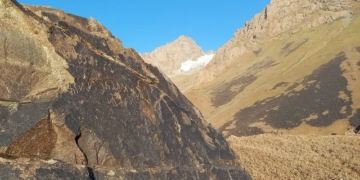The Gerenuk is a unique species of antelope found in East Africa, known for its ability to survive in areas with limited water sources. With a tall, slender body and a long neck, the Gerenuk is considered an example of evolutionary adaptation to its habitat.
Anatomy of the Gerenuk
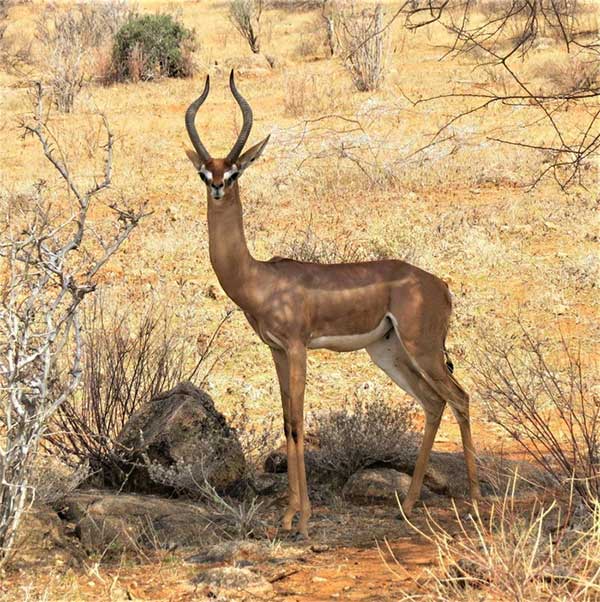
This species has a long neck, slender legs, and a small head.
The physical characteristics of this animal are well adapted to its environment, allowing it to stand out both on land and as an example of evolutionary adaptation.
With its long neck, slender legs, and small head, the Gerenuk is one of the few species of antelope capable of standing on its hind legs. Its coat varies from gray to sandy yellow or reddish-brown, and males grow two horns that typically curve backward. The Gerenuk also possesses exceptional eyesight, allowing it to detect predators from a considerable distance.
This combination of features makes the Gerenuk an impressively beautiful species that faces threats from poaching, habitat destruction, and international trade. Consequently, conservation efforts are underway to protect this species and its habitat.
Natural Habitat of the Gerenuk
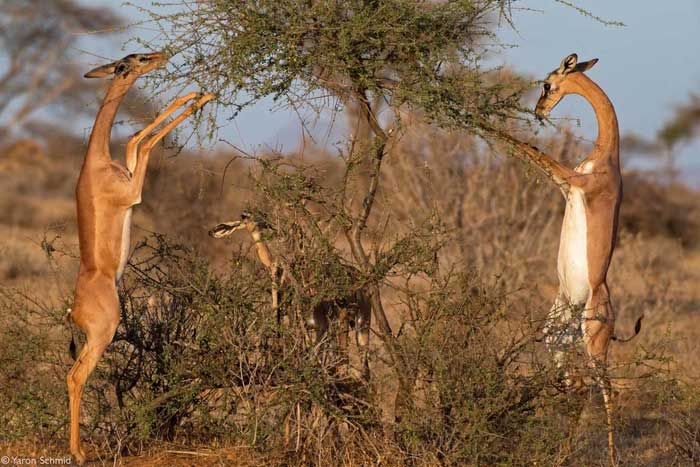
The Gerenuk has evolved to survive and thrive in areas with limited water sources.
The Gerenuk is primarily found in East Africa. This remarkable animal has evolved to survive and thrive in areas with limited water sources, inhabiting open forests and savannas where vegetation is sparse, such as thorny bushes and dry grass.
With large ears that help them dissipate body heat more effectively, Gerenuks live in small herds, usually around 10 individuals, and they often occupy territories of approximately one square kilometer.
The physical characteristics of these animals are particularly impressive – their long necks allow them to reach higher branches for food that other animals cannot access, while their slender legs enable them to run quickly and jump high enough to escape predators.
Gerenuks also exhibit a behavior known as “stotting” – jumping high into the air while running, which confuses predators and makes it difficult for them to track their movements.
This antelope species has developed the ability to absorb necessary water and moisture from leaves. At the same time, it prevents water loss from its body through mechanisms such as a nasal structure that reduces evaporation, concentrated urine, and a habit of being less active.
Feeding Habits of the Gerenuk
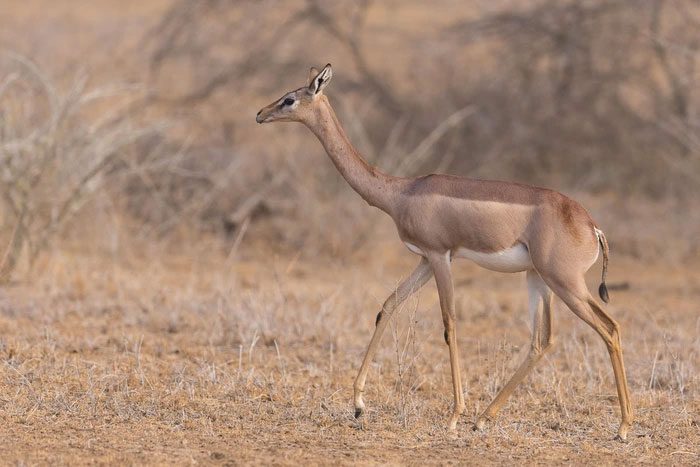
This species has developed an impressive skill set that allows it to survive in arid conditions.
The Gerenuk’s adaptation to the harsh climate of Africa is remarkable. However, this species has developed an impressive skill set that allows it to survive in arid conditions, such as reaching high branches and licking dew from vegetation when water is scarce.
Its eyesight also enables it to quickly spot potential predators, and its ability to stand upright gives it a better vantage point compared to when it is grazing on the ground.
Moreover, its unique coat and horns have made this species increasingly popular among poachers, leading to conservation efforts aimed at protecting their habitat through initiatives such as reforestation projects and anti-poaching patrols. With these efforts, we can help ensure that future generations can continue to observe this extraordinary animal.
Reproduction and Lifespan of the Gerenuk
The Gerenuk is a polygamous species, meaning that males can mate with multiple females. During the mating season, males will compete for territory to attract more females. After a gestation period of 6-7 months, females give birth to a single young, which is born with horns, fully developed fur, and can walk within minutes.
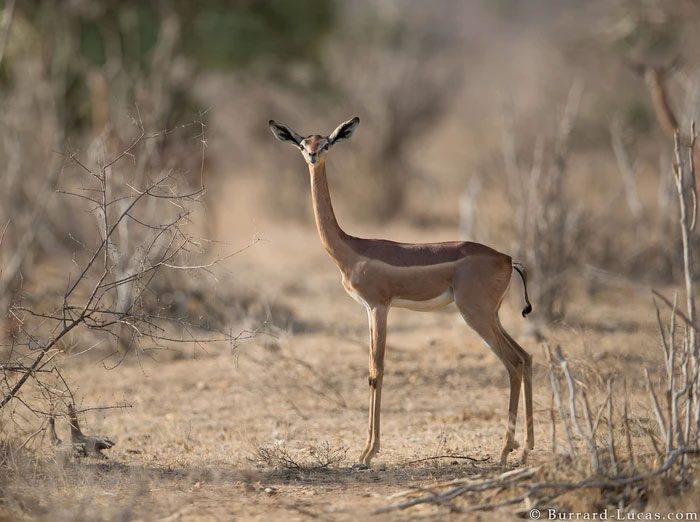
They primarily eat leaves and shoots from shrubs but will also eat fruit when available.
Upon reaching maturity, Gerenuks typically live solitary lives or in small groups with females. They primarily consume leaves and shoots from shrubs but will also eat fruit when available. This species can go for extended periods without drinking water as it derives most of its hydration from the plants it consumes.
The average lifespan of a Gerenuk in the wild is 12-15 years; however, in captivity, they are known to live up to 20 years.
Conservation Efforts for the Gerenuk Antelope
Conserving the Gerenuk is essential to ensure that future generations can continue to see and study these unique antelopes. This species is listed in CITES Appendix II, which regulates international trade in wildlife, and is protected in Kenya, Namibia, and Tanzania. Conservation efforts are underway to protect the Gerenuk from threats such as poaching and habitat destruction.
Organizations like the African Wildlife Foundation are working to protect the Gerenuk’s habitat and reduce poaching by funding anti-poaching patrols and creating awareness campaigns about the importance of conservation. Additionally, they are investing in reforestation projects to restore habitats that have been degraded or destroyed due to human activities.
Besides habitat protection, conservationists are also working to mitigate other threats such as habitat fragmentation. By connecting fragmented areas with corridors of natural vegetation, animals like the Gerenuk will be able to move more freely between habitats, increasing their chances of survival.
Finally, research into the behavior of Gerenuks is also being conducted to better protect them from threats such as hunting and habitat destruction. By studying their behavioral patterns, researchers can develop better conservation strategies that account for their specific needs as a species. This research can also help inform management decisions about where to best allocate resources for conservation efforts to be most effective in helping protect this unique species from extinction.




















































